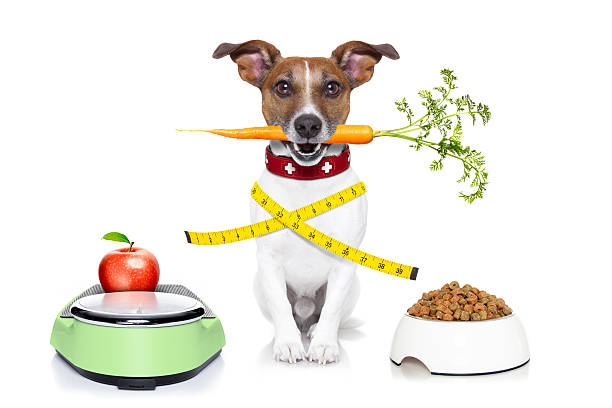
The Raw Food Debate: Is It Really Better for Pets?
The raw food movement for pets has gained a lot of attention, but is it truly the healthiest option? We dive deep into the pros, cons, and science behind raw pet diets.
🐶 Pet Star
25 min read · 31, Jan 2025

The Surge in Popularity of Raw Pet Food
The debate over raw food diets for pets has been heating up in recent years. Pet owners, looking to provide their furry companions with the best possible nutrition, have increasingly turned to raw food, or "biologically appropriate raw food" (BARF) diets, which mimic the natural eating habits of wild animals. Raw pet food often consists of raw meat, bones, fruits, vegetables, and other ingredients meant to replicate what an animal would naturally consume in the wild.
Pet owners are drawn to this trend for a variety of reasons. Some believe that feeding pets a diet similar to what they would eat in the wild promotes better health, while others see it as a more natural, wholesome option compared to highly processed commercial pet foods. With its rise in popularity, raw food has sparked both passionate support and strong opposition among pet owners, veterinarians, and pet nutritionists.
So, is the raw food diet truly beneficial for your pet, or is it just another passing trend in the pet food world? Let’s explore the arguments, science, and real-world experiences surrounding this controversial feeding choice.
The Promised Benefits of a Raw Food Diet
Proponents of raw food diets argue that it can offer several key benefits for pets, particularly when compared to conventional kibble or canned food. One of the main selling points is that raw food is considered more "natural," providing pets with a diet that closely resembles what they would have eaten in the wild. Advocates suggest that raw food diets promote:
1. Improved Digestion and Gut Health
Raw diets are typically higher in protein and lower in carbohydrates, which is closer to the nutritional profile of a pet’s natural diet. This is believed to support better digestion, as dogs and cats are biologically designed to thrive on protein-rich meals. Additionally, raw food proponents often note that a raw diet can lead to firmer stools, better nutrient absorption, and less gas.
2. Healthier Skin and Coat
A raw diet, rich in omega-3 fatty acids found in raw meat, bones, and fish, can lead to healthier skin and a shinier coat. Many pet owners who switch to raw food report seeing improvements in coat quality, reduced shedding, and less itching.
3. Stronger Teeth and Bones
Raw food diets often include bones, which are said to promote natural tooth cleaning, reducing plaque and tartar build-up. Proponents argue that chewing raw bones is a natural way for pets to maintain dental health.
4. More Energy and Better Weight Control
Advocates claim that raw food helps maintain an ideal body weight by providing a nutrient-dense, unprocessed meal. Many pet owners report that their pets have more energy and improved stamina after switching to a raw diet, and some even suggest it may reduce the risk of obesity.
The Other Side: Concerns and Risks
While the benefits of a raw food diet are often highlighted, there are also significant concerns that have been raised, particularly by veterinarians and animal health experts. Some of the most pressing issues with raw food diets include:
1. Nutritional Imbalances
One of the most critical concerns with raw food diets is the risk of nutritional deficiencies. Feeding raw food without careful planning and balancing can result in an incomplete diet, leaving pets at risk for deficiencies in key vitamins, minerals, and other nutrients. Some pet owners may be unaware of the exact proportions of meat, bone, and organ that are required to maintain a healthy and balanced diet, potentially leading to health issues in the long run.
2. Pathogens and Bacteria
Raw meats, especially if not handled or stored properly, can be a breeding ground for harmful bacteria such as Salmonella, E. coli, and Listeria. These bacteria can lead to foodborne illness, and while healthy pets can often handle these pathogens, there is always a risk of contamination. Additionally, some pets may carry these bacteria and inadvertently transmit them to humans, particularly immunocompromised individuals.
3. Bones and Choking Hazards
While raw bones are often touted as a natural way to clean teeth and strengthen jaws, they can pose serious risks to pets. Cooked bones, in particular, can splinter and cause choking or internal injury. Even raw bones, if not appropriately sized, can break teeth or cause digestive blockages.
4. Cost and Convenience
Raw pet food is generally more expensive than traditional kibble, and it requires careful planning and preparation. Many raw food diets involve sourcing and storing raw meat, which can be time-consuming and costly. For some pet owners, the practical challenges may outweigh the benefits.
The Science Behind Raw Pet Food
The question of whether a raw food diet is truly healthier for pets has sparked many scientific studies and debates. While some research suggests that raw diets can be beneficial for pets, the science is still evolving. In general, experts agree that a raw food diet, if properly balanced, can be a healthy option for some pets, but it requires careful attention to ensure that all nutritional needs are met.
A study published in the Journal of Animal Science in 2013 showed that raw food diets were more bioavailable and led to better digestion in dogs compared to kibble. However, the same study also highlighted the potential risks associated with feeding raw food, particularly the dangers of pathogens in raw meat and the possibility of nutrient imbalances.
Veterinarians often recommend that pet owners consult with an animal nutritionist or veterinarian to ensure they are feeding their pet a well-balanced diet, especially if they are considering a raw food regimen. Experts also suggest that pre-packaged, commercially available raw food diets may be a safer alternative, as they are typically formulated to provide the correct balance of nutrients and are made with high-quality ingredients that have been handled and processed safely.
Raw Food Diets in Practice: Real Stories from Pet Owners
Many pet owners who have embraced the raw food diet report positive changes in their pets' health. From shinier coats to improved energy levels, the anecdotal evidence from the raw food community is often compelling. For instance, one dog owner shared that her Labrador's skin allergies improved significantly after switching to a raw diet, while another noted that his cat, previously prone to gastrointestinal issues, became much more stable and content.
However, not all stories are positive. Some pet owners have found that their pets' health declined on a raw diet. One dog owner recounted that her dog experienced digestive upset and loose stools after transitioning to raw food, while another found that his pet developed a resistance to eating raw meat. These experiences highlight the importance of monitoring pets closely and adjusting their diets as needed.
Conclusion: Is the Raw Food Diet Worth It?
Ultimately, whether or not to switch your pet to a raw food diet is a deeply personal decision that depends on many factors, including your pet’s health needs, lifestyle, and your own commitment to managing a raw food regimen. While raw diets have some clear benefits, especially in terms of providing a more natural and protein-rich diet, there are also significant risks that should not be overlooked.
Before making the switch, pet owners should do thorough research and consult with a veterinarian or animal nutritionist to ensure that they are making an informed decision. It’s essential to consider your pet’s unique dietary needs, any potential health conditions, and the challenges that come with feeding a raw diet.
For those who are willing to put in the time and effort, and for pets who thrive on raw food, the benefits may be undeniable. However, for others, a high-quality commercial diet may be just as effective and much easier to maintain. The raw food debate is far from over, but with the right information and guidance, you can make the best decision for your pet’s health.
Q&A: The Raw Food Debate
Q: Can a raw food diet be harmful to my pet?
A: While a raw food diet can offer benefits, it carries risks such as nutritional imbalances and exposure to harmful bacteria. It’s crucial to ensure the diet is properly balanced and safely prepared.
Q: What should I include in a raw food diet for my pet?
A: A raw food diet should include high-quality meat, bones, organs, and some vegetables or fruits. Consulting with a veterinarian or pet nutritionist is highly recommended to ensure it is nutritionally balanced.
Q: Is raw food better than kibble for my pet?
A: Raw food may offer benefits like improved digestion and skin health, but it’s not always better for every pet. The choice depends on your pet’s specific health needs and how well the diet is managed.
Q: Are there safe commercial raw food options?
A: Yes, many commercial raw food options are available that are pre-formulated for balanced nutrition and safety. These options can be a good alternative to homemade raw diets.
Q: How do I transition my pet to a raw food diet?
A: Transition slowly, mixing the raw food with your pet’s current food over a period of several days to avoid digestive upset. Always monitor your pet for any adverse reactions during the transition.
Similar Articles
Find more relatable content in similar Articles

How Climate Change Affects Wild and Domestic Animals...
Climate change is dramatically.. Read More

How Pets Strengthen Family Bonds...
Pets are more than just compan.. Read More

The Growing Trend of Therapy and Emotional Support Ani..
Exploring the remarkable rise .. Read More

Pets and Mental Health: The Science Behind Emotional H..
Discover the profound impact o.. Read More
Explore Other Categories
© 2024 Copyrights by rPets. All Rights Reserved.